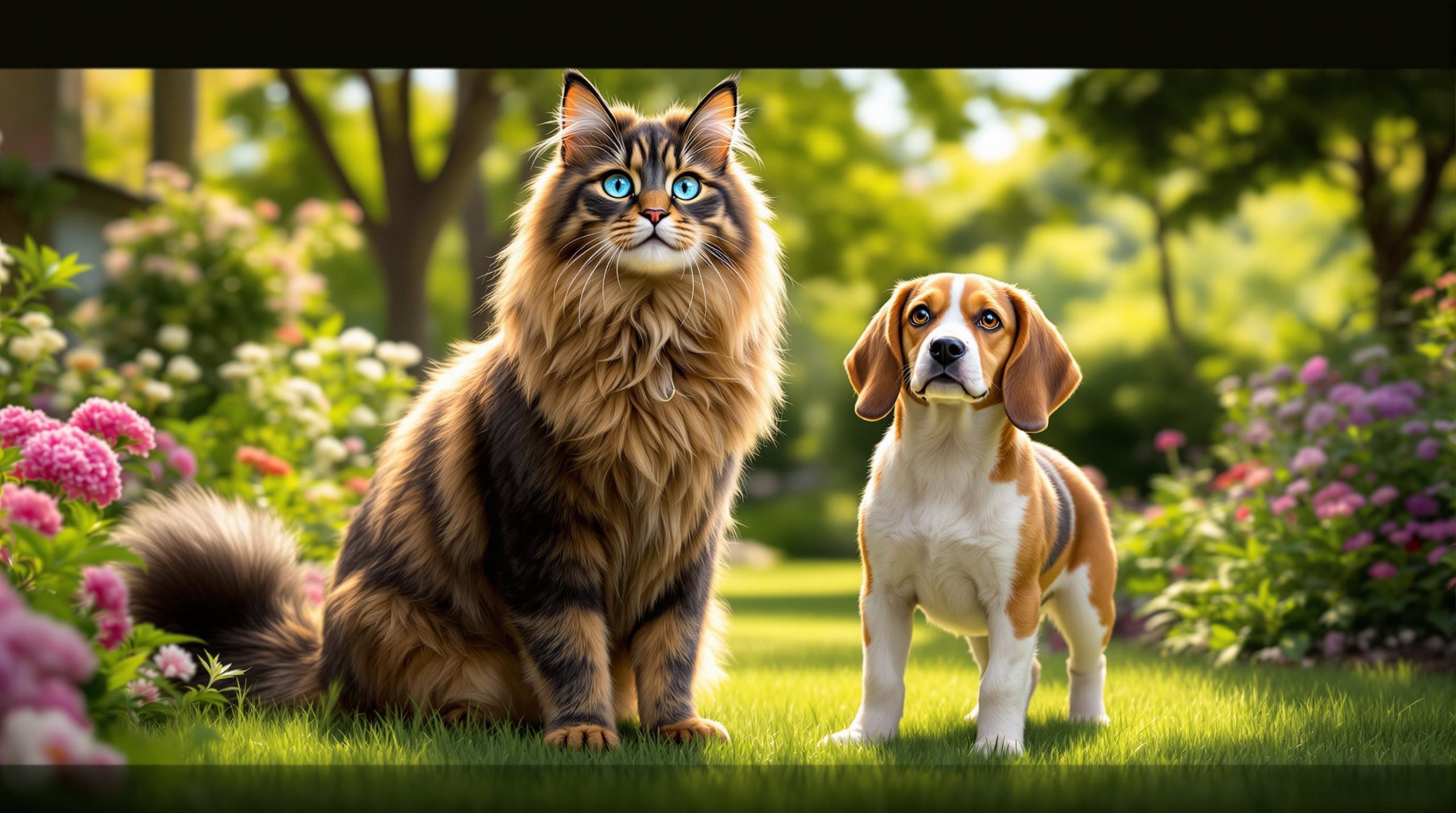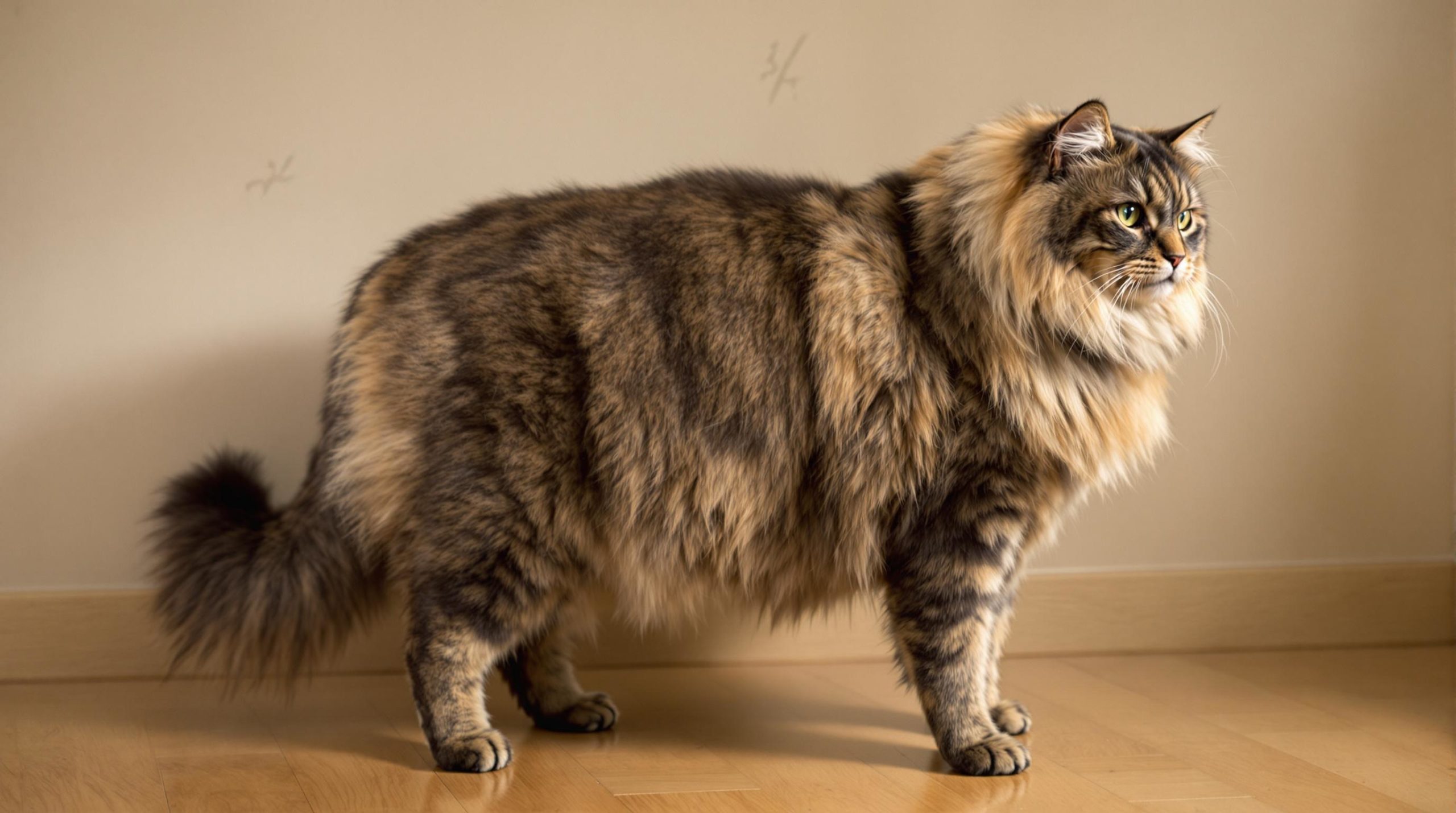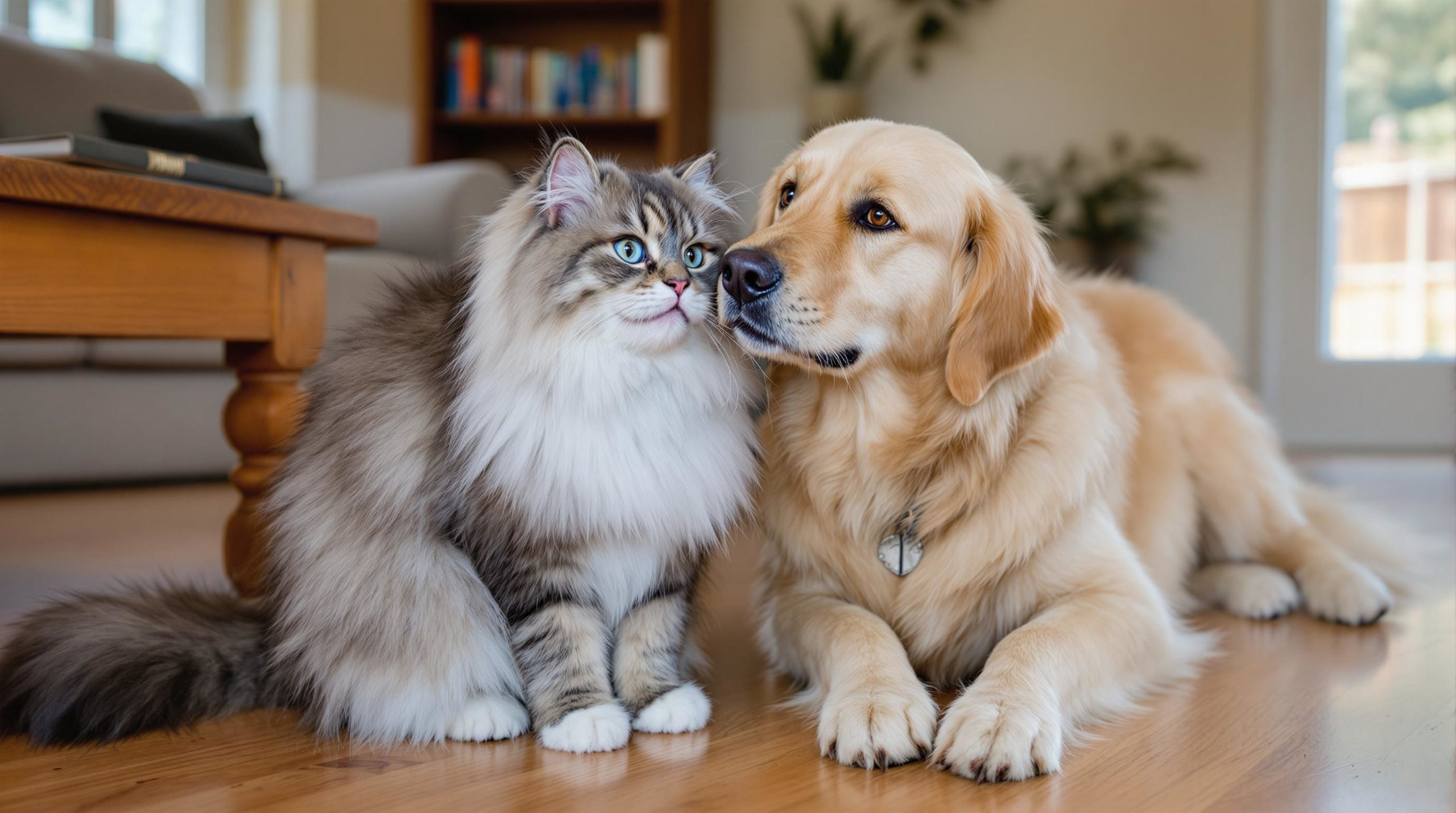the potential for a maine coon cat to take on a dog

When picturing a Maine Coon cat sizing up a dog, the mental image alone can be quite the head-turner. Known as the “gentle giants” of the feline world, Maine Coons boast impressive size and strength, sparking curiosity and a bit of unease about how they might fare against dogs. Could this majestic breed really “take on” a dog? The dynamics of such an encounter are layered, entwining aspects of physical prowess, instinctual behaviors, and social dynamics. Exploring these components offers a fascinating glimpse into the possibilities and realities of Maine Coons interacting with dogs in varied settings.
Understanding the Maine Coon Cat’s Physical Power and Hunting Instinct
The Maine Coon cat stands out not just for its imposing size, but for its remarkable agility and hunting proficiency. Adult males can tip the scales between 18 and 21 pounds, occasionally reaching over 25 pounds. Females, while slightly smaller, remain robust and muscular. This physical build equips them with a strong bite and razor-sharp claws that can seriously injure if deployed aggressively.
Beyond bulk, their natural agility means Maine Coons can jump, climb, and pounce with precision, attributes derived from their hunting ancestry. Their instincts propel them to be efficient predators capable of taking down prey like rats, rabbits, or birds close to their own size.
- Powerful bite force: Capable of inflicting puncture wounds and breaking bones.
- Sharp claws: Designed to slash, hold, and immobilize targets.
- Refined reflexes: Enable rapid, precise strikes that pack a punch.
These traits illustrate why Maine Coons, despite their typically calm demeanor, must be respected for their latent feline strength. It’s also why understanding their capabilities sheds light on how interactions with dogs might escalate under certain stimuli.
| Physical Attribute | Typical Measurement | Functional Relevance |
|---|---|---|
| Adult Male Weight | 18-21 lbs (8.2–9.5 kg) | Supports strength and agility |
| Adult Female Weight | 12-15 lbs (5.4–6.8 kg) | Balance of power and maneuverability |
| Bite Force | Strong enough to puncture small bones | Used for hunting and defense |
For further insight into the Maine Coon’s physical features, such as their revered paws, visit Maine Coon Paw Features. Their paw structure contributes greatly to their climbing and hunting success.

When Might a Maine Coon Cat Take on a Dog? The Real Scenarios
While the idea of a Maine Coon seriously injuring or killing a dog sounds dramatic, reality paints a nuanced picture. It is crucial to emphasize that such events are very rare, occurring only under extraordinary provocation or threat perception. Typically, if any Maine Coon vs dog competition erupts, it involves very small or vulnerable dog breeds.
Dogs weighing less than 7 pounds, such as Chihuahuas, Yorkshire Terriers, or Toy Poodles, can be especially susceptible. The feline’s bite or claw could inadvertently result in severe injury when pressure is applied to delicate areas like the neck or head.
- Small Dog Breeds at Risk: Chihuahua, Pomeranian, Toy Poodle, Papillon, Yorkshire Terrier.
- Cat’s Defensive Strikes: Swatting, biting, clawing aimed at escaping a threat.
- Potential Consequences: Deep wounds, infection risk, trauma.
Nevertheless, the majority of Maine Coons are avoidant by nature when faced with hostility from dogs, preferring to hiss, flee, or display warning signals rather than inflict damage. Cat-dog altercations rarely escalate into anything beyond harmless posturing unless repeatedly provoked or cornered.
| Scenario | Outcome Potential | Typical Behavior |
|---|---|---|
| Small dog encounters Maine Coon unexpectedly | Possible defensive scratches or bites | Maine Coon hisses and escapes if able |
| Repeated provocation by small dog | Possible injury to dog | Cat may strike with greater force |
| Large dog approaches calmly | Low risk of conflict | Mutual avoidance or amicable coexistence |
To understand the Maine Coon’s hunting prowess and potential for lethal instinct, check out Maine Coons as Hunting Creatures.
Insights Into Maine Coon Cat and Dog Breed Behavioral Differences
The dynamics of pet interaction between Maine Coons and dogs often hinge more on temperament and communication styles than raw strength or size. Maine Coon cats typically possess an independent, yet affectionate nature, often likened to that of a gentle dog. Dogs, meanwhile, vary widely in personality and social instincts, spanning from pack-oriented extroverts to more assertive or territorial types.
Understanding this interplay is crucial to preventing conflicts between companion animals.
| Trait | Maine Coon Cat | Dog Breed |
|---|---|---|
| Social Nature | Independent but affectionate | Often pack-oriented, thrives on interaction |
| Aggression Response | Defensive, avoids conflict | Varies; some highly assertive |
| Territorial Behavior | Highly territorial (food, litter box) | Variable, some territorial over space/toys |
| Communication Style | Subtle cues: tail flick, body posture | More direct: barking, lunging, dominant stance |
- Pet training that recognizes these differences can enhance harmony.
- Respecting feline boundaries helps reduce stress and aggression.
- Monitoring canine behavior for signs of overexcitement or dominance is key.
Exploring the various vocalizations Maine Coons use to express emotions is useful for interpreting their feelings; visit Sounds of Maine Coons for examples of communication techniques.
Effective Strategies for Introducing a Maine Coon Cat to a New Dog Breed
Successful cohabitation between Maine Coons and dogs largely depends on thoughtful introductions and respect for both species’ instincts. Hastily orchestrating a meeting can trigger undesirable reactions, risking potential conflict.
- Create separate living spaces: Begin with isolated zones to allow scent familiarization through exchanged toys or blankets.
- Facilitate controlled visual contact: Use barriers allowing observation without direct interaction.
- Conduct brief, supervised meetings: Keep early encounters short, allowing the Maine Coon to dictate engagement.
- Always provide escape routes for the cat: Elevated perches or quiet rooms reduce stress.
- Encourage positive associations: Treats and praise during calm encounters reinforce good behavior.
- Gradually increase interaction duration: Increase time together once peaceful coexistence is demonstrated.
This staged process caters to the animal dynamics of both species, respecting their social and territorial instincts while promoting positive pet interaction.
For enthusiasts curious about grooming and caring for Maine Coons during such interactions, including the challenges posed by their luxurious coat, more details can be found at Maine Coon Luxurious Coat.

Interpreting Animal Dynamics to Prevent Conflicts in Hybrid Pets Households
Hybrid pets—that is, homes where cats and dogs share space—require close observation of behavior to maintain harmony. Recognizing early signs of discomfort or tension can prevent escalation to violence or injury.
- Key cues from Maine Coons: Tail flicking, ear position, fur puffing signal emotional states.
- Watch dog breed responses: Barking frequency, lunging, or body stiffness indicate agitation.
- Promote individual attention: Separate time for each companion reduces competition and anxiety.
Successful coexistence hinges on ongoing pet training that respects the innate and learned behaviors of both species. When integrated well, Maine Coons and dogs often form unique, playful bonds that defy the old stereotype of cat vs dog rivalry.
| Behavioral Sign | Meaning in Maine Coon | Meaning in Dog Breed |
|---|---|---|
| Tail Position | High tail: confidence; flicking: irritation | Wagging: friendliness; stiff: alertness |
| Vocalization | Hissing: warning; chirping: curiosity | Barking: alert or excitement |
| Body Posture | Arched back: defensive; relaxed: calm | Standing tall: dominance; crouching: submission |
To learn more about how Maine Coons’ natural fur and grooming needs relate to stress and comfort, Maine Coons Fur Characteristics offers comprehensive insights.
Frequently Asked Questions About Maine Coon Cats and Dogs
- Can a Maine Coon Cat seriously injure a dog?
Yes, particularly smaller dog breeds under 7 pounds can be at risk of injury due to the Maine Coon’s strength and sharp claws, but healthy socialization and respect usually prevent such incidents.
- Do Maine Coons naturally get along with dogs?
Generally, Maine Coons are sociable and dog-like in temperament, often getting along well with canine companions when properly introduced.
- How should I introduce my Maine Coon to a new dog?
Gradual introductions involving separate spaces, scent familiarization, supervised meetings, and positive reinforcement are key to smooth integration.
- Are there specific dog breeds Maine Coons struggle with?
Maine Coons may find overly aggressive or dominant dog breeds challenging, especially if the dogs do not respect feline boundaries.
- What signs indicate tension between a Maine Coon and a dog?
Indicators such as hissing, fur puffing, growling, barking, and stiff postures should be monitored and addressed promptly to avoid conflict.